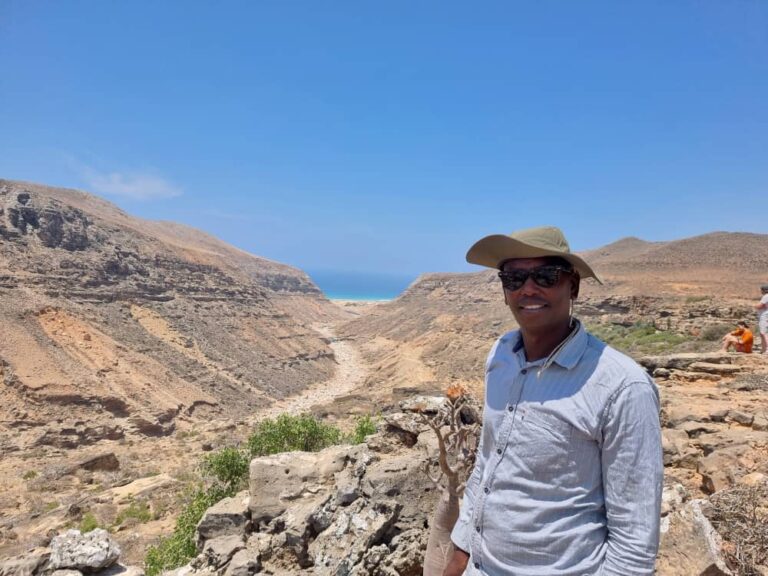History of Socotra
Origins of the name “Socotra”
Island lore suggests that under Aristotle’s counsel, Alexander the Magnificent dispatched settlers from the thinker’s native city to establish a presence on Socotra during the 4th century BCE. They aimed to harness the island’s rich resources, particularly its plentiful aloe and other botanicals. The island, known to its prior Indian inhabitants as Dvipa Sukhadra, a term in Sanskrit meaning ‘Isle of Felicity,’ found itself under new governance when the Greek expedition supplanted the Indian settlers. The Greek newcomers melded the ancient Sanskrit designation into their dialect, coining it Dioscorida. This term, rooted in the island’s historical appellation, eventually evolved into its contemporary name: Socotra.
There are several theories regarding the origin of Socotra’s name. One commonly proposed hypothesis is that the name reflects the island’s commerce, as it was known for exporting products like the sap of the dragon’s tree, incense, and herbs. According to the Arabian geographer Yaqut Al-Hamawi, the name ‘Socotra’ is derived locally from ‘Souk,’ meaning ‘market,’ and ‘Qatira,’ meaning ‘drop.’ When combined, these words form ‘Socotra’.
👉🏽 Click here if you want to know more about Socotra’s language.
Establishment of a Greek Colony on Socotra
The Hellenic settlers established a community on Socotra, potentially imparting their democratic values to the local and Indian inhabitants. By the first century BCE, the island was renowned as a beacon of utopian ideals. Diodorus of Sicily, in his chronicles, portrayed Socotra as a flourishing democratic and spiritual community, where the martial populace selected their leader yearly and traversed the isle in chariots.
This societal blueprint may well align with Aristotle’s vision when selecting families to populate the new colony, as he articulated in his ‘Politics’ the essence of an idyllic state under hypothetical conditions, especially one inhabited by a warrior class, suggesting Socotra as a prime candidate for a democratic experiment. However, Diodorus’ depictions, including references to Socotra under its Egyptian moniker ‘Panchaea,’ a locale of grand temples dedicated to Saturn and statuesque deities, alongside Abd al-Kuri as a sacred isle eschewing the burial of the dead, must be approached with skepticism since he, like the geographers before him, never set foot on Socotra.
Nonetheless, his accounts of Socotra’s wealth in frankincense, myrrh, and diverse fauna—though likely exaggerated, particularly regarding elephants—are part of the island’s storied narrative. The hazardous Erythraean Sea’s lore adds crocodiles, sizable reptiles, and white tortoises to this mythical menagerie, with Sindbad’s tales adding the roc, a gigantic bird capable of lifting elephants, which might whimsically explain the absence of the large pachyderms Diodorus mentioned.
Christianity on Socotra
Constructed from the remnants of a shipwreck, the inaugural Christian church on Socotra was attributed to Apostle Thomas. By the 4th century, it had flourished to the extent that it dispatched emissaries to the Yemeni mainland. It’s believed that Emperor Constantine II delegated Bishop Theophilus Indus to the Himyarite seat at Dhafar, where he established a church, momentarily elevating Christianity to the state’s official creed.
This narrative of enduring Christian influence is bolstered by the accounts of Cosmas Indicopleustes, who, in the 6th century, undertook voyages challenging earlier geographic assertions, insinuating that the island’s Christian community was governed by the Eastern Assyrian ecclesiastical hierarchy. Marco Polo, centuries later, seemed to affirm Cosmas’s claims.
The Church of the East, at times dubbed the Nestorian Church, diverged from mainstream Catholic doctrine in the 5th century under Nestorius, the then Bishop of Constantinople, over theological distinctions concerning Mary and Christ’s dual nature. The Church, as legend has it, owes its origins to Thomas, hinting at either his direct influence or the inception of the lore surrounding his visit.
Moreover, the period from the 10th to the 15th century saw Socotra gain notoriety as a pirate sanctuary. Historical records suggest that in the early 15th century, the island may have been under the rule of a queen, a notion not unfounded given the prevalence of female monarchs in Yemen’s past, such as the Queen of Sheba and Queen Arwa in the 11th century, making the prospect of a female sovereign in Socotra quite conceivable.
The Portuguese occupied Socotra
In 1507, the Portuguese took temporary control of Socotra, seizing a stronghold held by the Mahri near Souk after a fierce skirmish. By 1511, following an assertive retaking by the Mahri sultans four years post-occupation, the Portuguese relinquished their hold, though not without leaving behind a church they had erected on the captured fortress grounds — structures that were ultimately razed by the Mahri. Despite this, the Portuguese intermittently engaged with Socotra for a century thereafter. In his writings on Socotra, Vitaly Naumkin recounts that mountain tribes on the island preserved songs narrating the exile of their forebears to Socotra as a form of penance. This has led to speculations that Socotra served as a penal colony of sorts under the Portuguese, fuelling theories that today’s Socotran natives might trace some lineage back to these European settlers.
The conversion of Socotra to Islam
Toward the end of the 16th century, Christian influences on Socotra had swiftly declined. The island no longer had any clergy, and the inhabitants who continued religious practices merged ancient rites, whose meanings had faded, with elements of celestial worship. With the reassertion of Mahri sultanate dominance, the local populace embraced Islam. Today, traces of the island’s Christian past are scarce.
British occupation of Socotra and modern times
In 1835, the British occupied Socotra after the ruling Mahri sultan refused to sell the land to the Empire. The British intended to use the island as a coaling station but scrapped the idea after they founded the colony at Aden in 1838. Socotra reverted to Mahri control. In 1886, the Mahra Sultanate of Qishn and Socotra became the first sultanate in the area to sign a formal treaty with Britain and become a British protectorate. By the mid-20th century, the Mahri sultans were living on Socotra, and they declined to join the Federation of South Arabia in the 1960s. In 1967, Socotra became part of South Yemen. Socotra was incorporated into the new unified Republic of Yemen when the People’s Democratic Republic of Yemen and the Yemen Arab Republic merged in 1990.
Ready to visit Socotra?
Let’s get in touch!
Adnan, ready to make your journey unforgettable.

